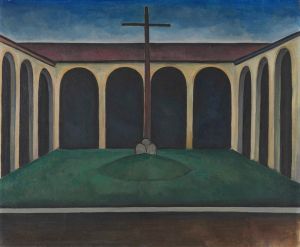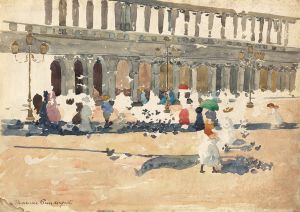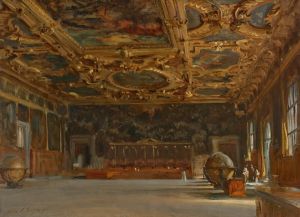
San Gimignano
A hand-painted replica of Alexander Kanoldt’s masterpiece San Gimignano, meticulously crafted by professional artists to capture the true essence of the original. Each piece is created with museum-quality canvas and rare mineral pigments, carefully painted by experienced artists with delicate brushstrokes and rich, layered colors to perfectly recreate the texture of the original artwork. Unlike machine-printed reproductions, this hand-painted version brings the painting to life, infused with the artist’s emotions and skill in every stroke. Whether for personal collection or home decoration, it instantly elevates the artistic atmosphere of any space.
San Gimignano by Alexander Kanoldt is a painting created by the German artist Alexander Kanoldt, a prominent figure associated with the New Objectivity (Neue Sachlichkeit) movement in the early 20th century. The painting depicts the medieval town of San Gimignano, located in Tuscany, Italy, which is renowned for its well-preserved towers and historical architecture. Kanoldt's work is characterized by its precise, almost photographic attention to detail, and this painting exemplifies his meticulous approach to composition and form.
Alexander Kanoldt (1881–1939) was a painter and professor who played a significant role in the development of modern art in Germany during the interwar period. He was a founding member of the New Objectivity movement, which emerged as a reaction against the emotional intensity and abstraction of Expressionism. Artists within this movement sought to depict reality with clarity and objectivity, often focusing on urban landscapes, still lifes, and portraits. Kanoldt's works are particularly noted for their geometric precision and serene, almost detached quality.
San Gimignano, the subject of this painting, is a UNESCO World Heritage Site and is often referred to as the "Town of Fine Towers" due to its iconic skyline of medieval tower houses. The town's architecture and historical significance have made it a popular subject for artists and travelers alike. Kanoldt's depiction of San Gimignano captures the town's unique character, emphasizing its architectural forms and the interplay of light and shadow. The painting reflects the artist's interest in structure and order, aligning with the New Objectivity's focus on clear, unembellished representation.
The exact date of the painting's creation is not widely documented, but it is consistent with Kanoldt's body of work from the 1920s and 1930s, a period when he frequently explored architectural and urban themes. During this time, Kanoldt traveled extensively, and his experiences in Italy influenced many of his compositions. His works often convey a sense of stillness and timelessness, qualities that are evident in San Gimignano.
Kanoldt's career was significantly impacted by the political climate of Nazi Germany. In 1937, his works were labeled as "degenerate art" (Entartete Kunst) by the Nazi regime, and many of his paintings were removed from museums. Despite this, Kanoldt's contributions to modern art and his role in the New Objectivity movement remain significant.
San Gimignano by Alexander Kanoldt is an example of how the artist combined his technical skill with his interest in architecture and landscape. The painting serves as a testament to Kanoldt's ability to capture the essence of a place while adhering to the principles of the New Objectivity movement.

















